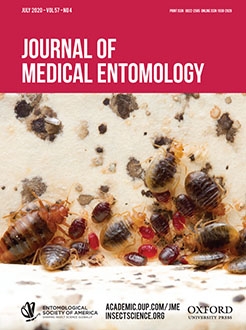Culicoides midges vector numerous veterinary and human pathogens. Many of these diseases lack effective therapeutic treatments or vaccines to limit transmission. The only effective approach to limit disease transmission is vector control. However, current vector control for Culicoides midges is complicated by the biology of many Culicoides species and is not always effective at reducing midge populations and impacting disease transmission. The endosymbiont Wolbachia pipientis Hertig may offer an alternative control approach to limit disease transmission and affect Culicoides populations. Here the detection of Wolbachia infections in nine species of Culicoides midges is reported. Infections were detected at low densities using qPCR. Wolbachia infections were confirmed with the sequencing of a partial region of the 16S gene. Fluorescence in situ hybridization of Culicoides sonorensis Wirth and Jones adults and dissected ovaries confirm the presence of Wolbachia infections in an important vector of Bluetongue and Epizootic hemorrhagic disease viruses. The presence of Wolbachia in Culicoides populations in the United States suggests the need for further investigation of Wolbachia as a strategy to limit transmission of diseases vectored by Culicoides midges.
How to translate text using browser tools
21 January 2020
Cryptic Wolbachia (Rickettsiales: Rickettsiaceae) Detection and Prevalence in Culicoides (Diptera: Ceratopogonidae) Midge Populations in the United States
Hunter Covey,
Rafe H. Hall,
Alyssa Krafsur,
Megan L. Matthews,
Phillip T. Shults,
Corey L. Brelsfoard
ACCESS THE FULL ARTICLE
It is not available for individual sale.
This article is only available to subscribers.
It is not available for individual sale.
It is not available for individual sale.

Journal of Medical Entomology
Vol. 57 • No. 4
July 2020
Vol. 57 • No. 4
July 2020
biting midge
Culicoides
Wolbachia




